How to Make Corn Silk Tea
This post may contain affiliate links, view our disclosure policy for details.
Learn how to make corn silk tea. This is a simple tea that is very beneficial to our body and another way to use corn. Corn silk can also be preserved by drying which means you can easily make corn silk tea year round!
We pretty much live in corn country here in central NC. Local farmers sell 12 ears of corn at the market for $4. It’s so affordable it almost doesn’t make sense to grow it yourself. We eat so much of it every summer, and every summer I dry the silk and use it for corn silk tea.
It’s really cool how useful corn is. We use the husk for art (the kids make dolls and such), the silk for “corn hair tea” (as my kids call it), the corn as food, and we give the cob to the chickens as a snack… We use every bit of it!
How to Make Corn Silk Tea…
What is Corn Silk?
Corn silk is the “hair” that you find under the husk of the corn. The stringy stuff can be used fresh or dried (I’ll show you how I dry it in a minute). It will change its color and darken a little bit if you decide to dry it but it will hold for a long long time.
Corn Silk Tea Benefits…
- Corn silk is high in potassium and, therefore, has a diuretic effect on the urinary system. In other words, it promotes the production of urine which means it makes you pee, a lot.
- Corn silk will also help prevent kidney stones and is useful with other urinary problems like nephritis (inflammation of the kidneys), cystitis (urinary tract infection), and prostatitis (swelling and inflammation of the prostate gland).
- Corn silk is also known to reduce water retention in the body and may be beneficial in treating high blood pressure and gouty arthritis (uric acid builds up in the blood and causes inflammation in the joints). HERE is a good research for further learning.
- Another research shows that corn silk tea can be used to treat metabolic syndrome and assist in weight loss…
“Metabolic syndrome (MS) is a very common medical problem worldwide. It includes obesity, hypertension, hyperglycemia, and abnormal levels of triglycerides and high-density lipoprotein cholesterol. It is closely associated with insulin resistance and may lead to diabetes mellitus, liver diseases, or cardiovascular diseases. Corn silk (CS), a traditional Chinese medicine, has been reported to have multiple beneficial effects, including hypotensive, anti-diabetic, and hypolipidemic properties. This suggests that corn silk could be used to treat or prevent metabolic syndrome.”
You can read the research HERE.
Ingredients…
- Corn cobs with the husk still on
- Honey, maple, or sugar if you like to sweeten your tea
A Simple Corn Silk Tea Recipe…
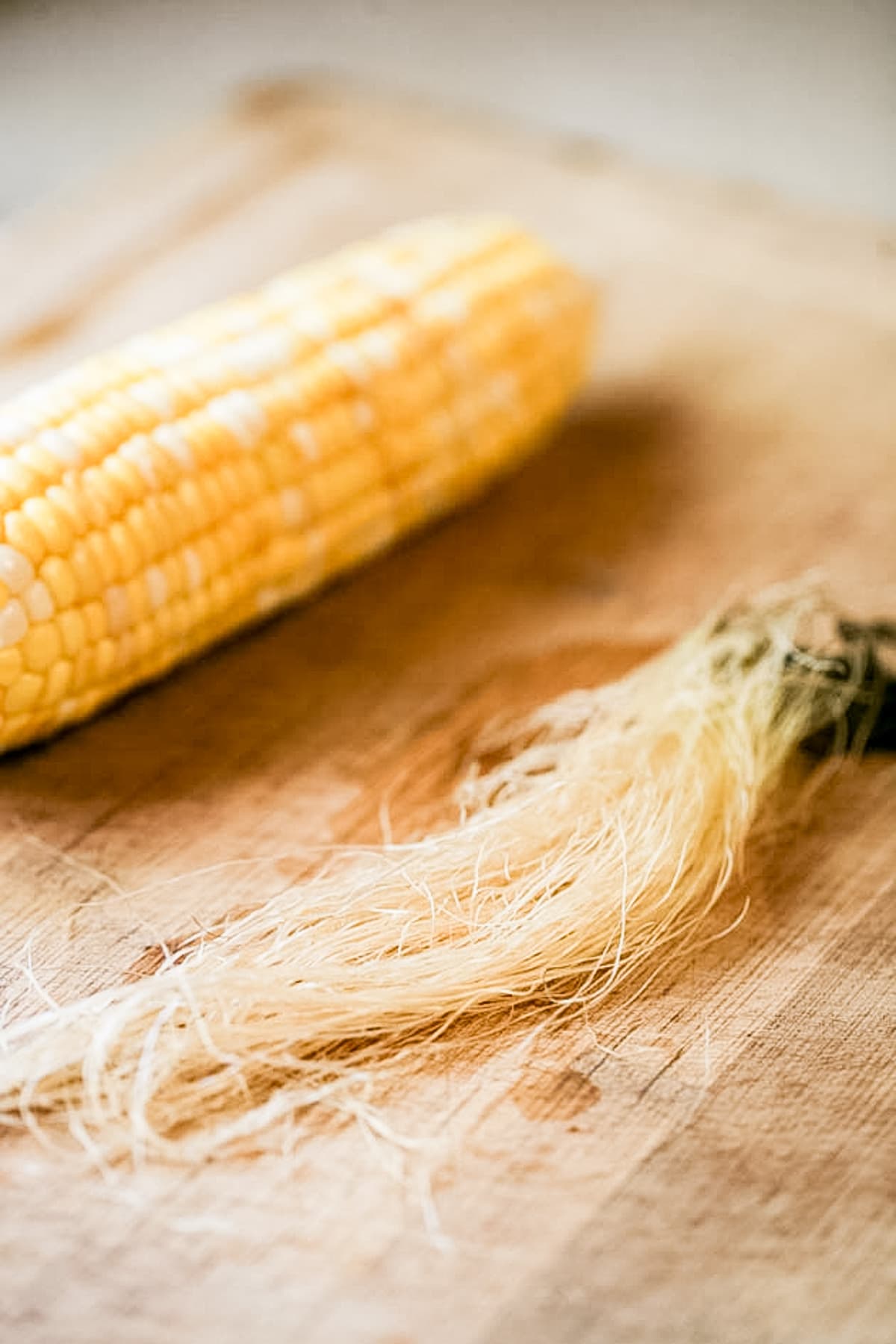
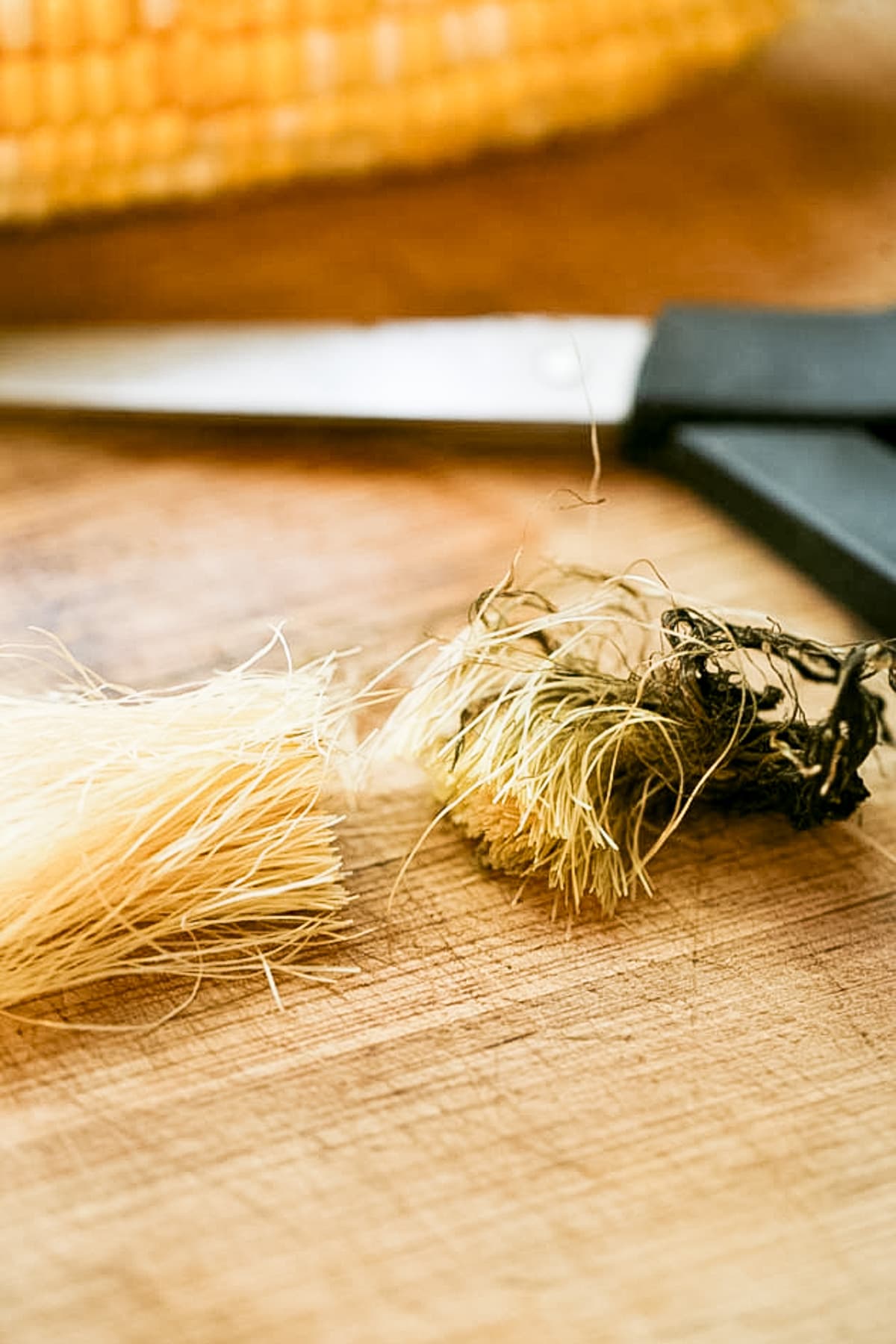
Step one – remove the silk. Start by removing the corn husk to expose the silk. Then peel the silk off the corn cob. The top part of the silk, the part that wasn’t covered by the husk, is usually dark and dirty looking. Cut that part off and discard.
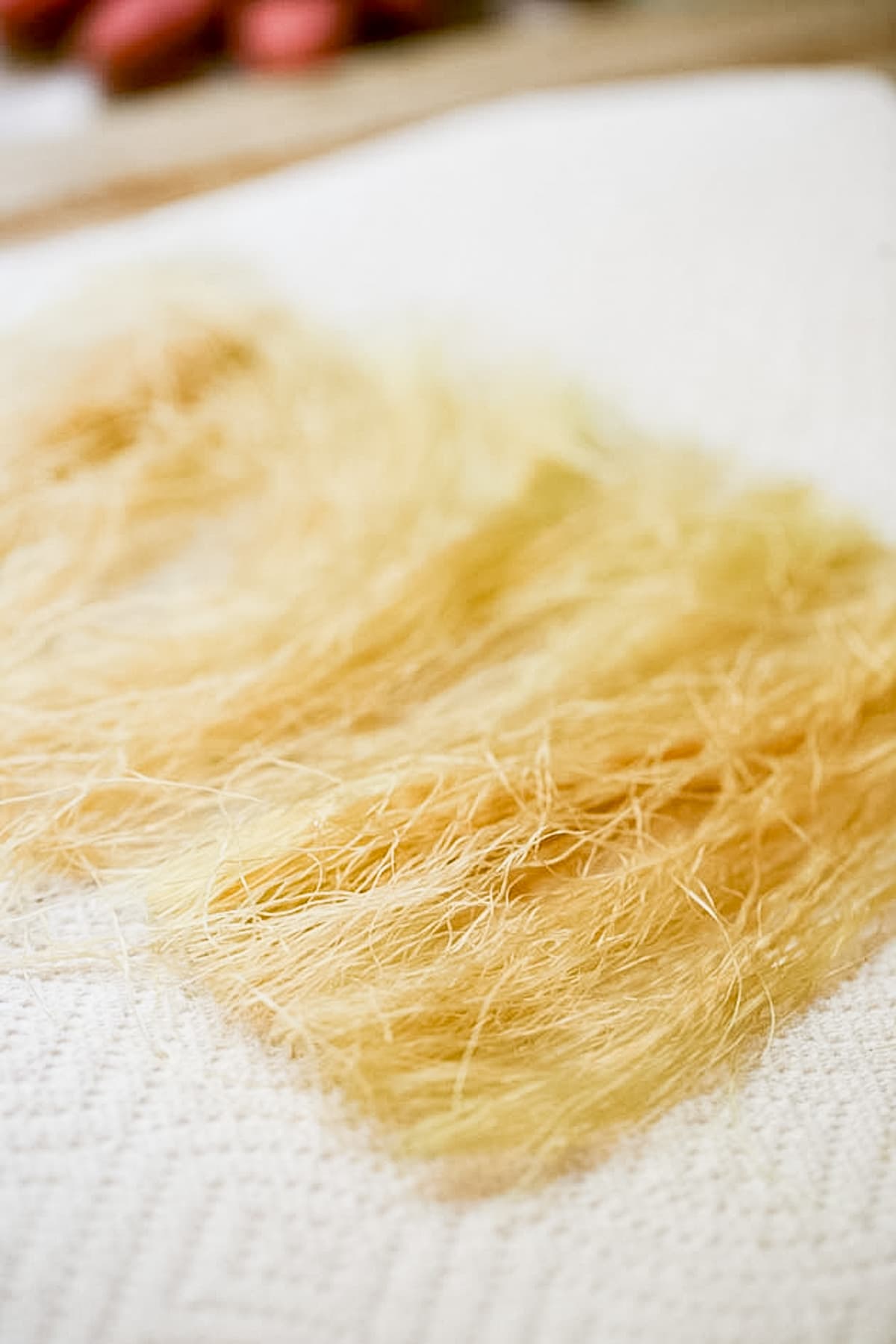
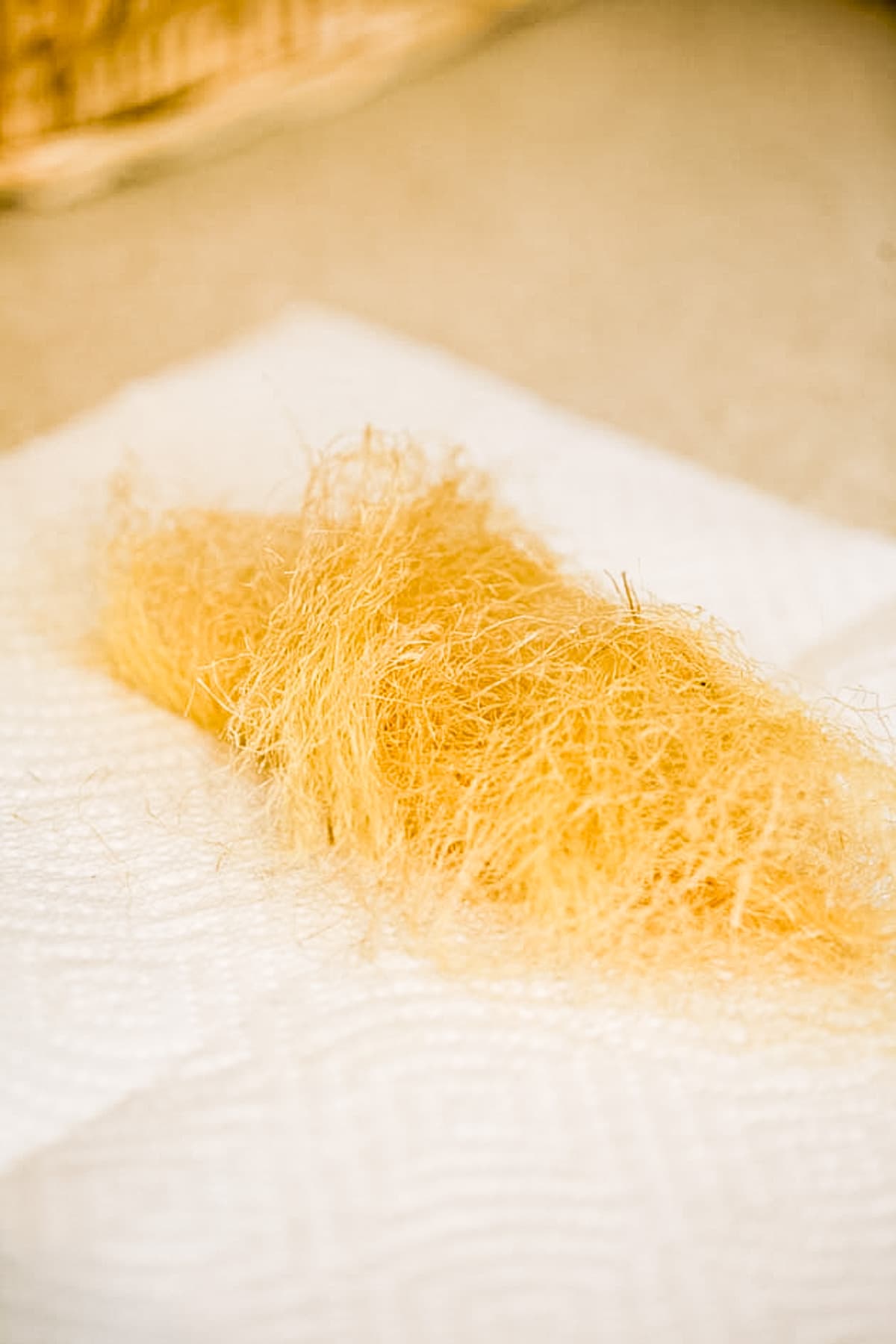
Step two – dry the silk. There are two ways to do this… The first is to place the corn silk on a paper towel on the kitchen counter at room temperature and let it be for a few days. Every other day, turn it to make sure that it’s drying well. Within a few days, it will be dry and ready for tea. The other option is to place it in the dehydrator at 95 degrees F for 8-12 hours. Both ways are fine, choose whatever works best for you.
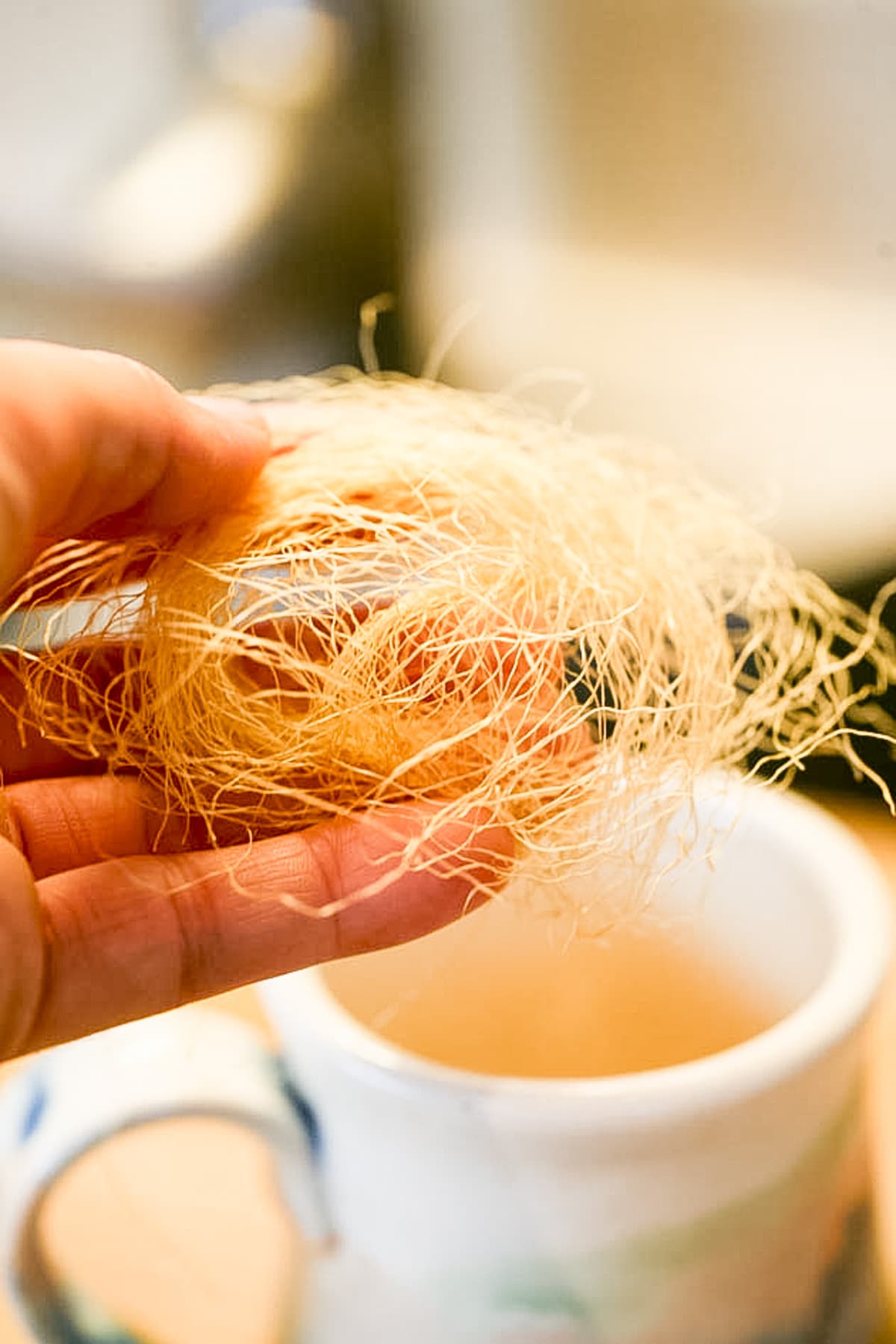
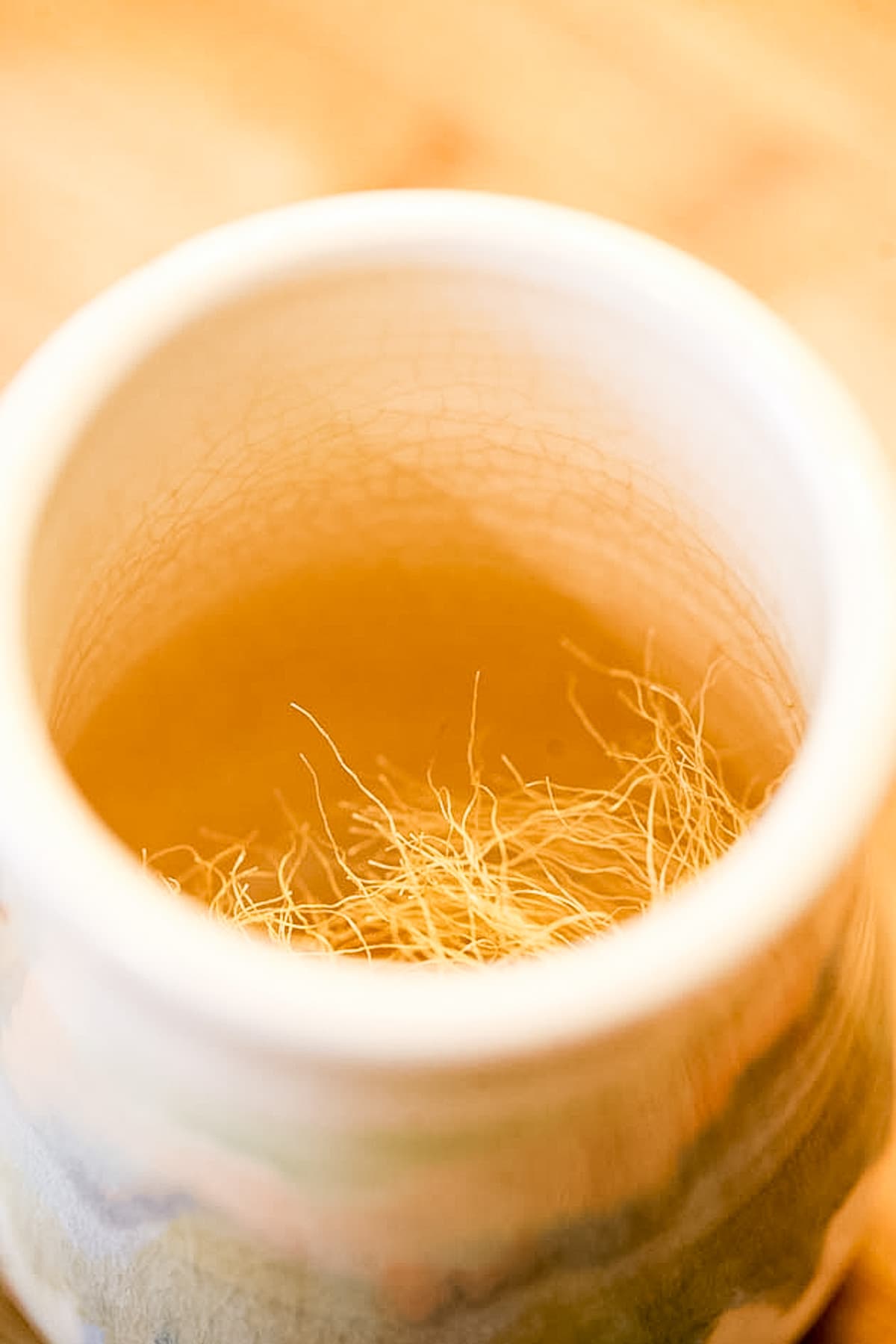
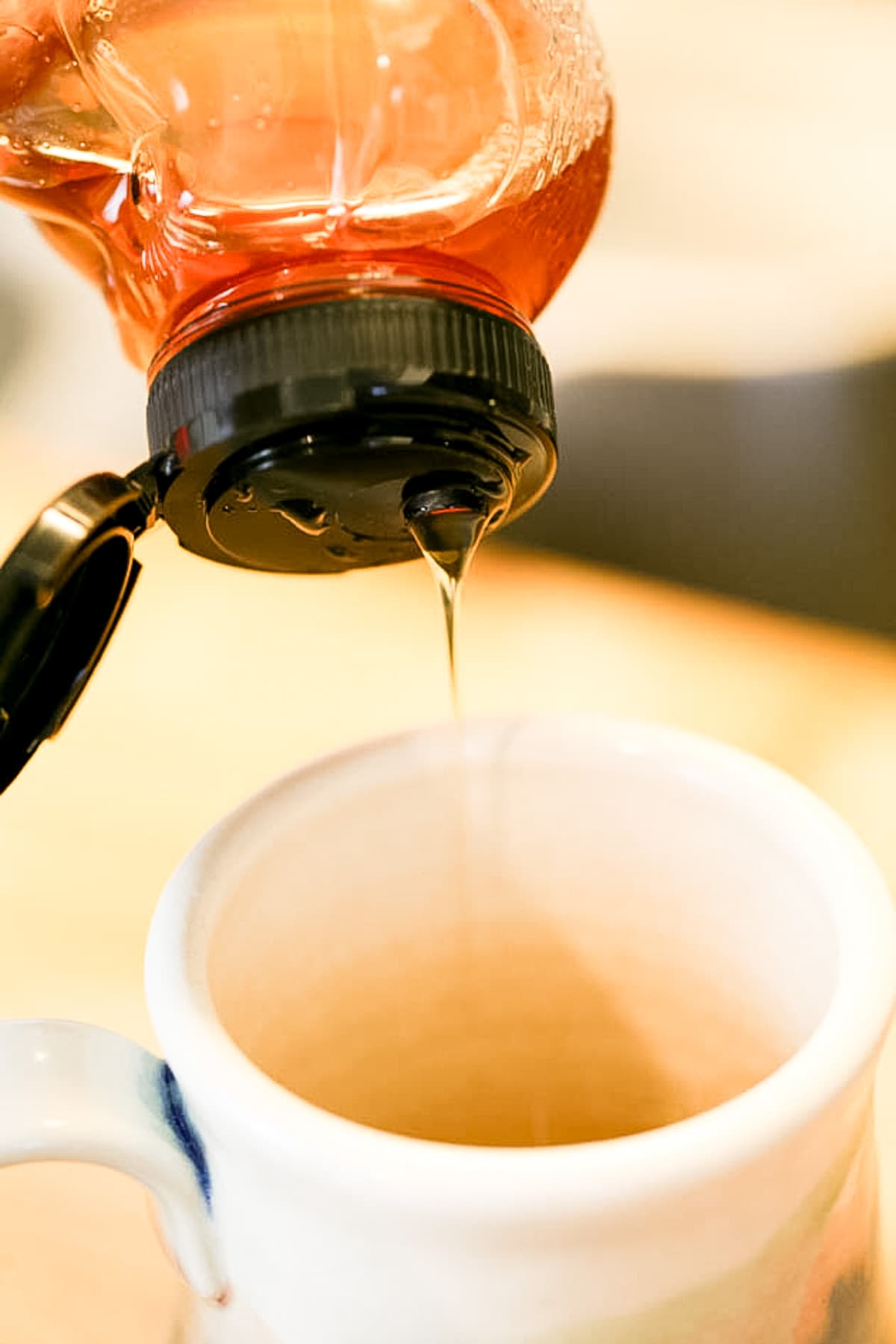
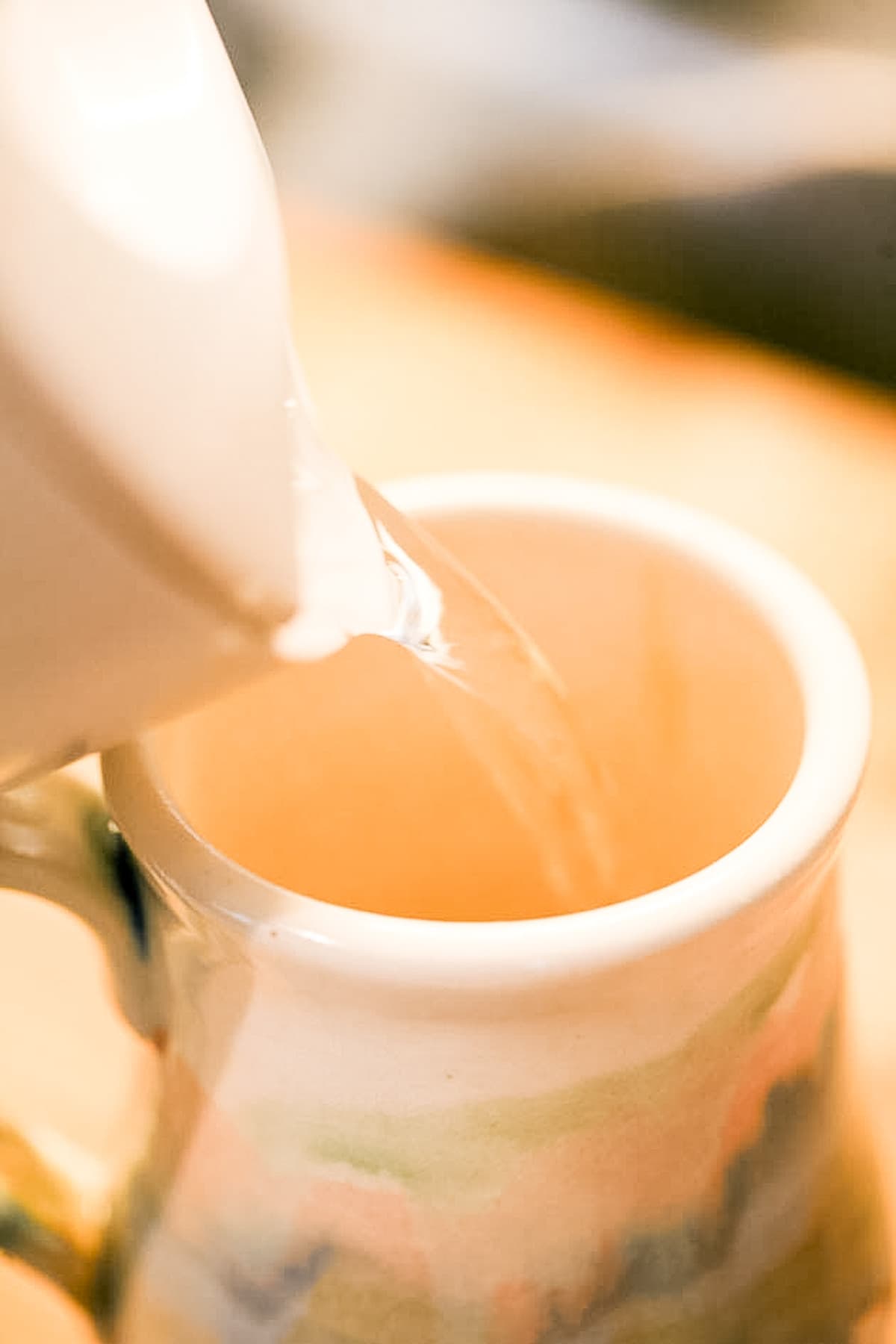
Step three – make corn silk tea. Grab about a tablespoon of dry corn silk and place it in a mug. Add boiling water and let the corn silk steep for five minutes before drinking.
Kitchen Notes…
- How to store corn silk – to store your dry corn silk, place it in a ziplock bag or a mason jar and leave it at room temperature on the self or in the pantry.
- Remove the silk or don’t – I usually leave my corn silk in the hot water as I drink my tea, however, if you like, you can remove it after letting it steep for a few minutes. You can also place it in a tea mesh bag so it’s not just floating around and is easier to remove if you choose to.
- Use the silk fresh – someone in the comments was asking why not use the silk when it’s still fresh. I think that you can, however, I feel like it tastes better when it’s dried (the water content is down and the flavor isn’t diluted) and I also feel that it’s easier to handle.
- Taste – of course, corn silk tea tastes a bit like corn! I don’t think that it tastes bad, however, feel free to add it to other teas to adjust the flavor. You can add fresh mint, or you can add it to any other kind of loose-leaf or bag tea that you make.
Frequently Asked Questions…
I would start with three or four cups a week and see how you feel.
I don’t think that this will work but I’ve never tried.
I never use it. I just have my corn silk tea in a jar on the shelf with the rest of my teas. If it has been dried properly it should be just fine.
Yes! Once the silk had time to steep in boiling water all you have to do is let the water cool to room temperature. Remove the silk and store the tea in the fridge.
Corn silk tea works fast! Five minutes after you drink it you’ll be visiting the potty. Then you’ll feel like you didn’t have a drink in two weeks so you’ll run to your kitchen and gulp down a big glass of water. It’s all good! This is exactly what it’s supposed to do. I hope that you’d give it a try!
More Natural Stuff…
- 47 Ways to Prevent and Treat Chigger Bites
- Homemade Aloe Vera Juice
- Licorice Tea, What Is It, How to Make it, and Why Drink It
- How to Get Rid of UTI Without Antibiotics
- What is Hemp Seed and How to Use it
- What is Flax Seed and How to Add it to Your Diet
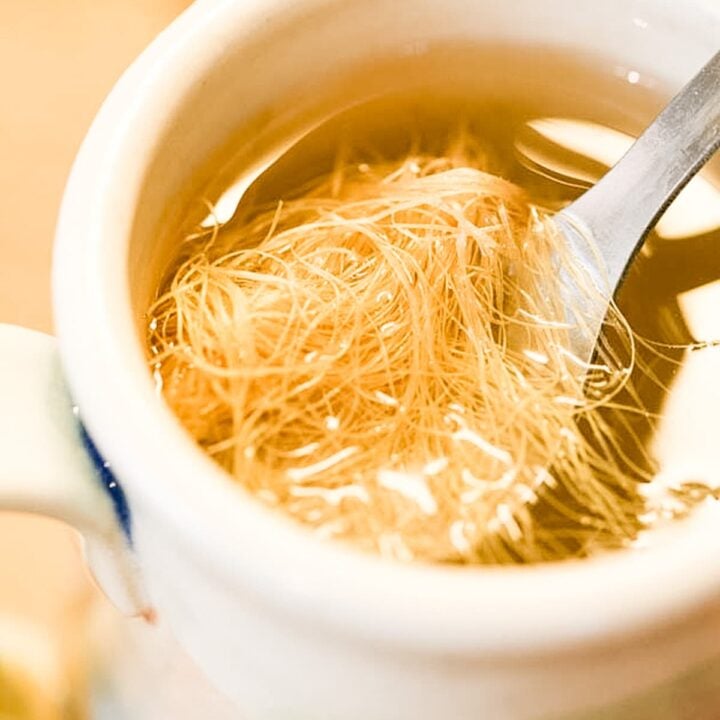
Corn Silk Tea
A simple way to make corn silk tea.
Ingredients
- Corn cobs with the husk still on (as many as you want)
- Honey, maple, or sugar if you like to sweeten your tea
Instructions
- Start by removing the corn husk to expose the silk. Then peel the silk off the corn cob. The top part of the silk, the part that wasn’t covered by the husk, is usually dark and dirty looking. Cut that part off and discard.
- Next, dry the silk. There are two ways to do this… The first is to place the corn silk on a paper towel on the kitchen counter at room temperature and let it be for a few days. Every other day, turn it to make sure that it’s drying well. Within a few days, it will be dry and ready for tea. The other option is to place it in the dehydrator at 95 degrees F for 8-12 hours. Both ways are fine, choose whatever works best for you.
- Grab about a tablespoon of dry corn silk and place it in a mug. Add boiling water and let the corn silk steep for five minutes before drinking.
Notes
Kitchen notes...
- How to store corn silk – to store your dry corn silk, place it in a ziplock bag or a mason jar and leave it at room temperature on the self or in the pantry.
- Remove the silk or don’t – I usually leave my corn silk in the hot water as I drink my tea, however, if you like, you can remove it after letting it steep for a few minutes. You can also place it in a tea mesh bag so it’s not just floating around and is easier to remove if you choose to.
- Use the silk fresh – someone in the comments was asking why not use the silk when it’s still fresh. I think that you can, however, I feel like it tastes better when it’s dried (the water content is down and the flavor isn’t diluted) and I also feel that it’s easier to handle.
- Taste – of course, corn silk tea tastes a bit like corn! I don’t think that it tastes bad, however, feel free to add it to other teas to adjust the flavor. You can add fresh mint, or you can add it to any other kind of loose-leaf or bag tea that you make.
Nutrition Information:
Yield: 1 Serving Size: 1Amount Per Serving: Calories: 30Total Fat: 1gSaturated Fat: 0gTrans Fat: 0gUnsaturated Fat: 1gCholesterol: 0mgSodium: 2mgCarbohydrates: 41gFiber: 2gSugar: 25gProtein: 3g


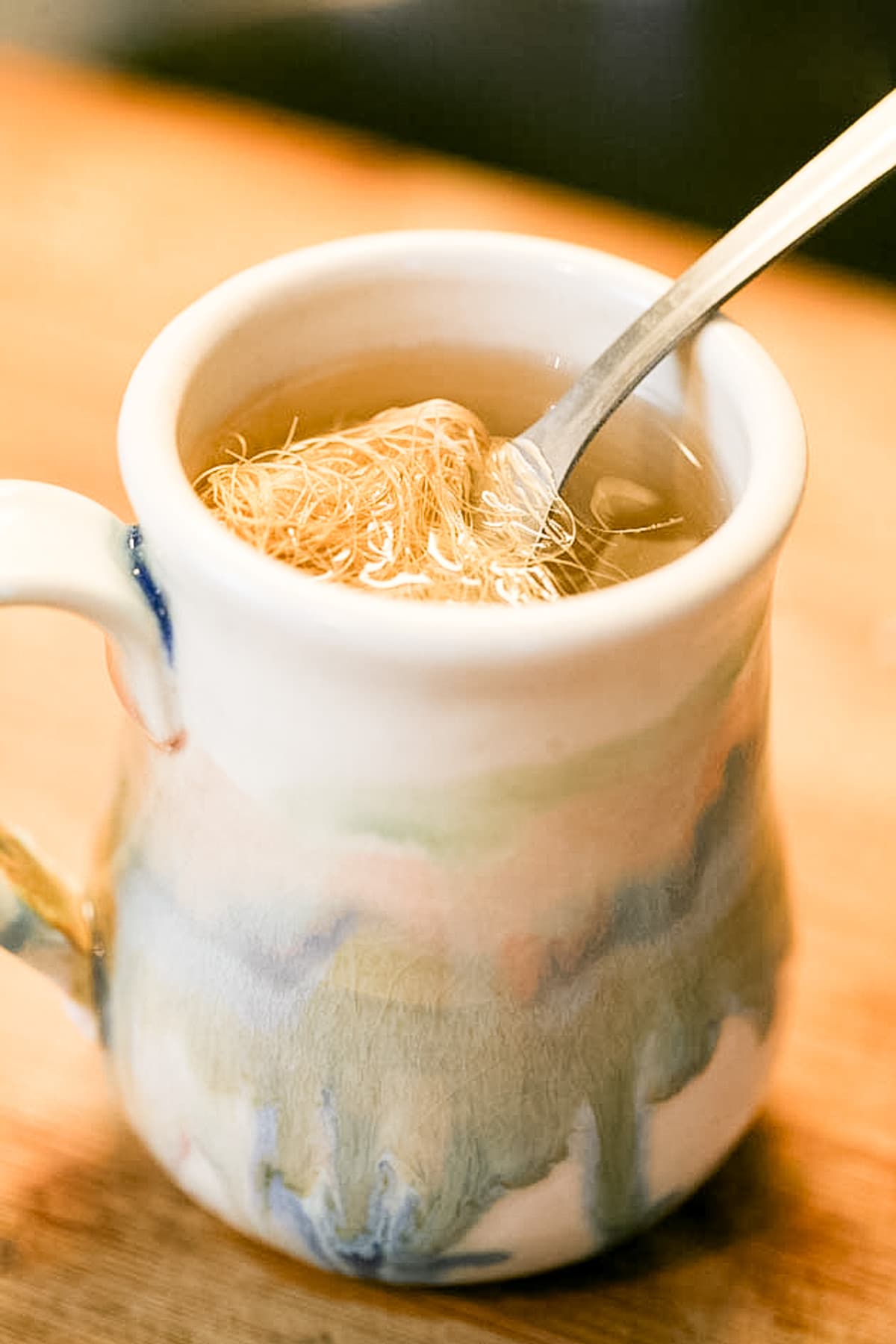

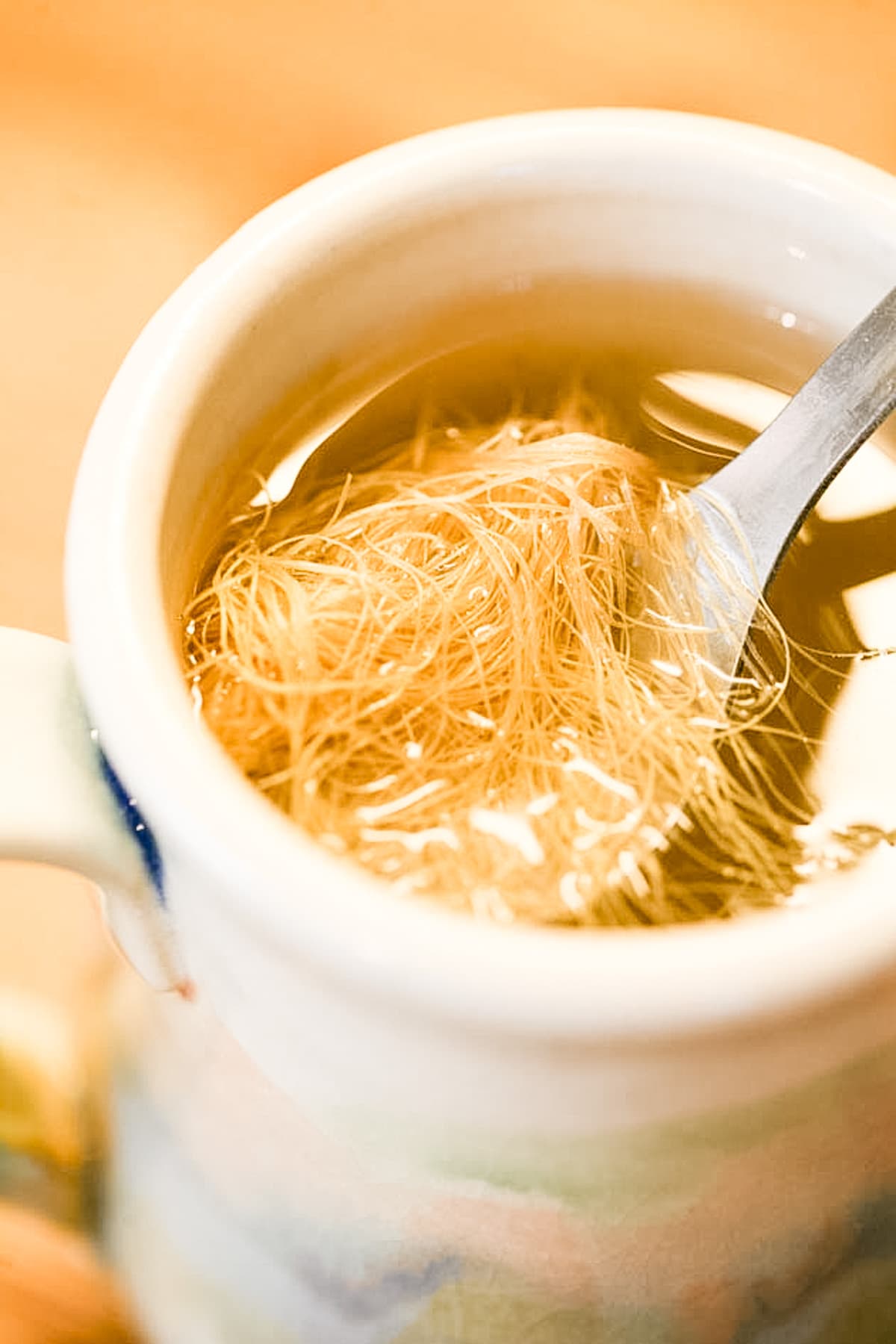
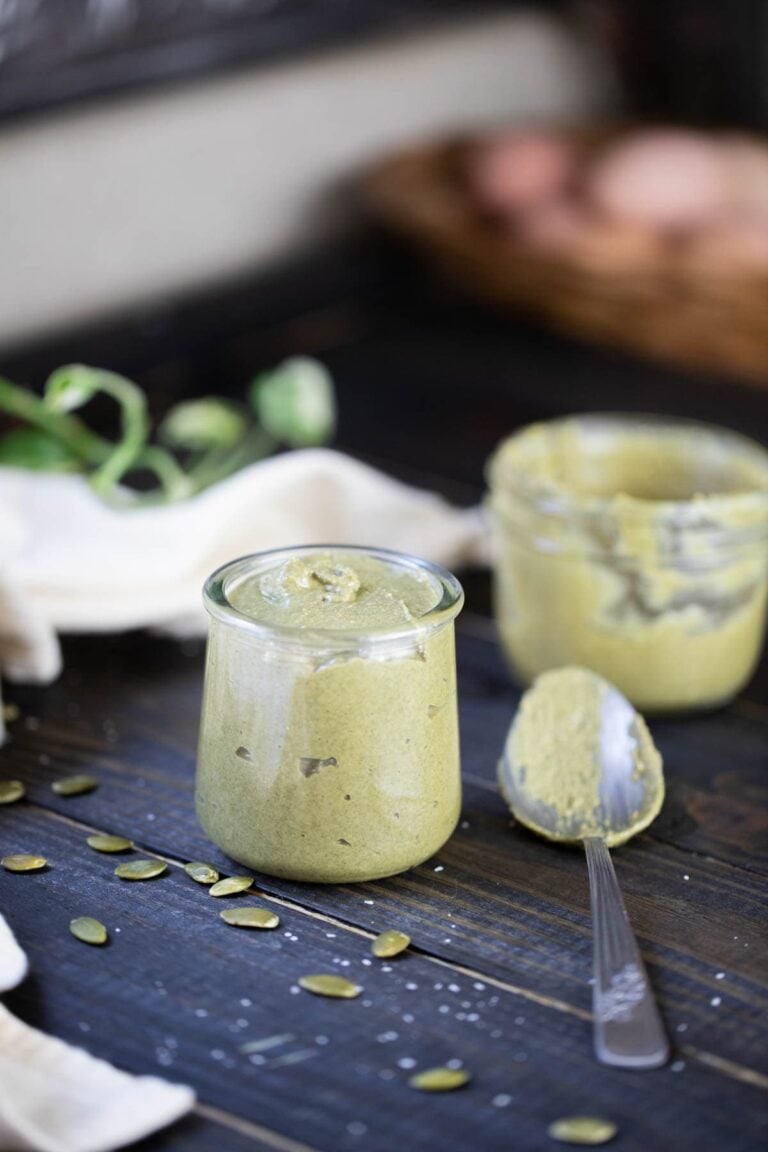
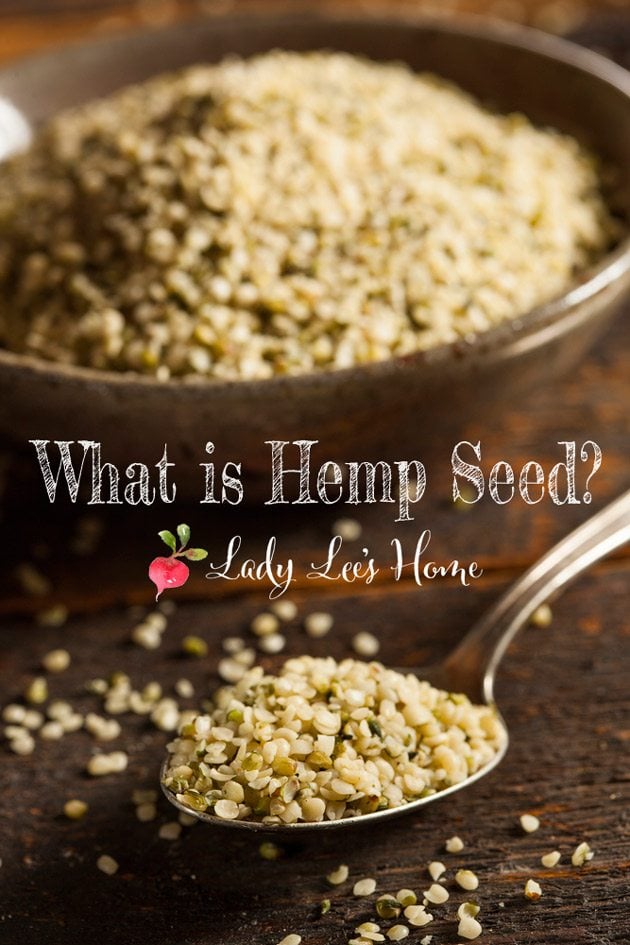
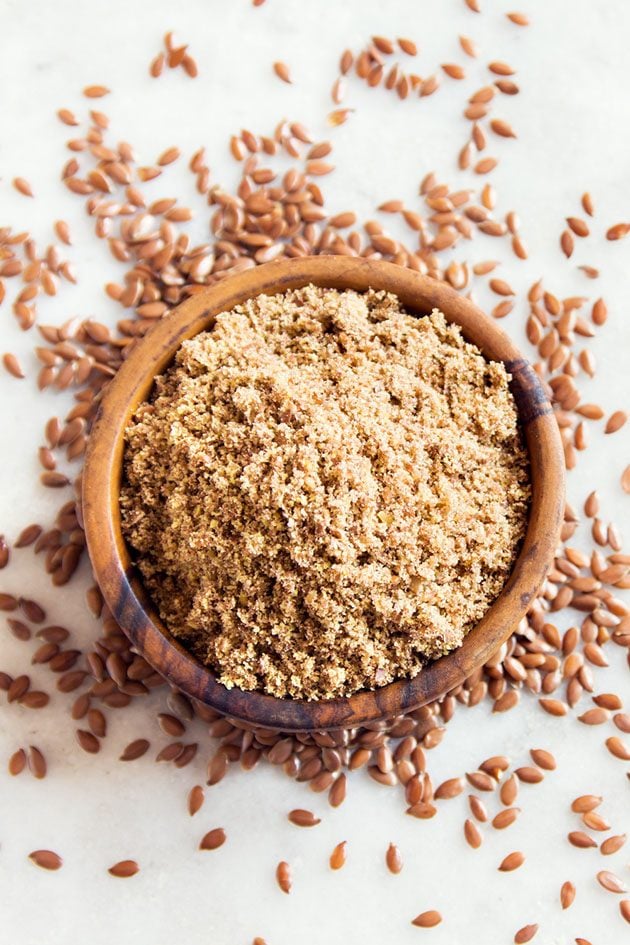
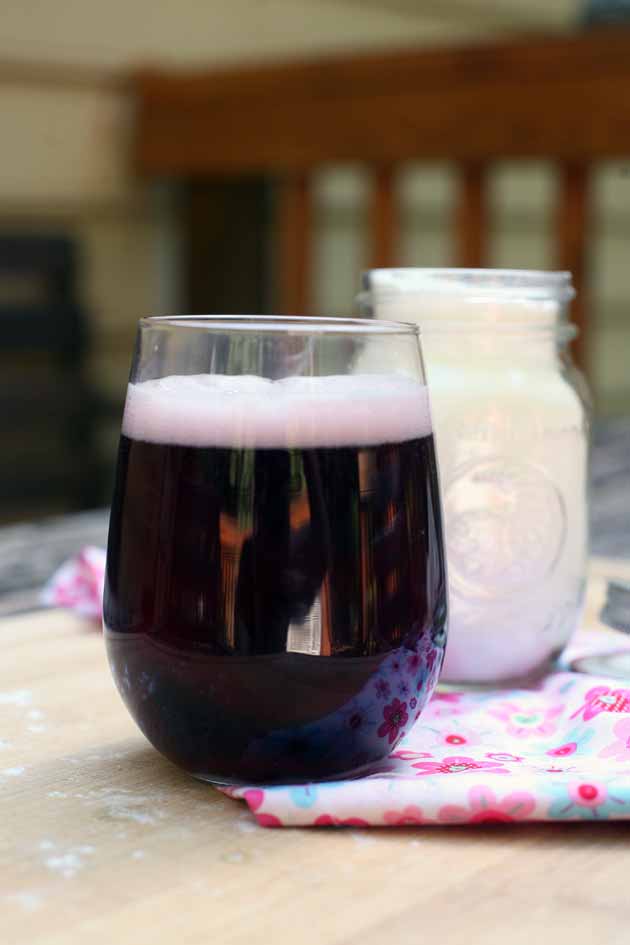
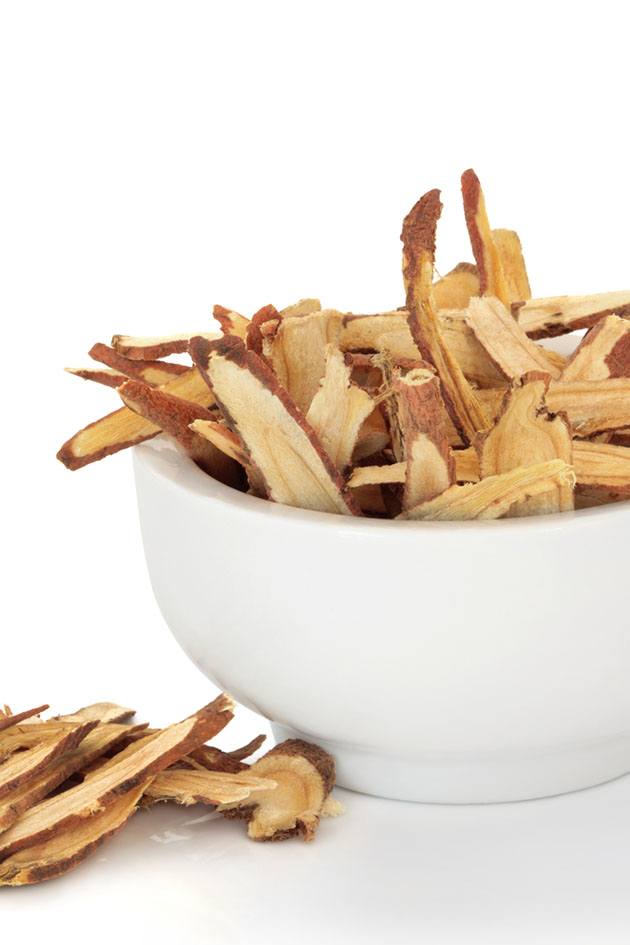
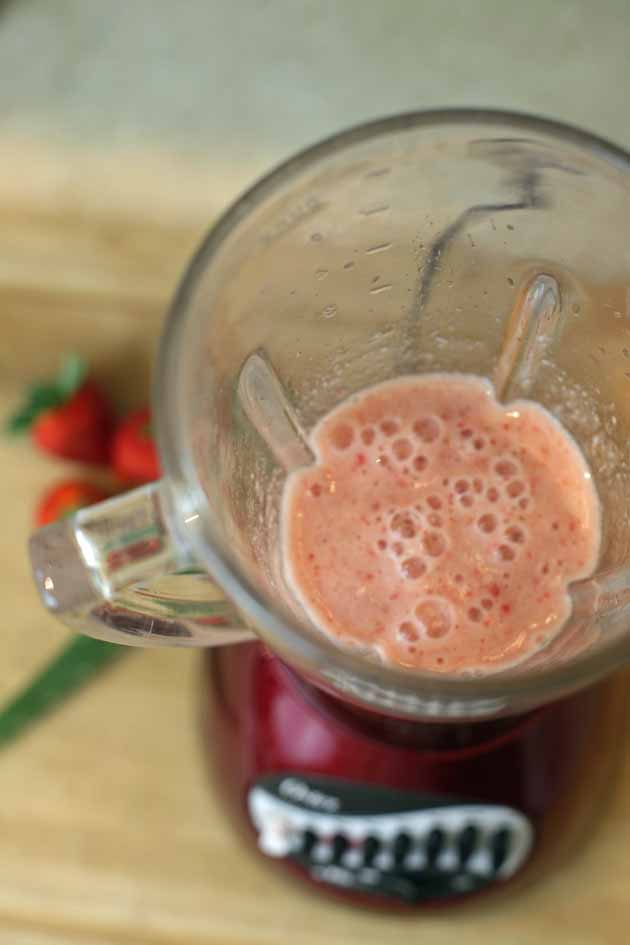
How often should you drink a cup? Does it actually dehydrate you? I have a fatty liver, so I’m wanting to try this to see if it helps.
I would start with three or four cups a week and see how yu feel. It does dehydrate you but it also helps the urinary tract wash out toxins. Which is a good thing.
How much corn silk do you use for one cup of tea? Thank you
Maybe a tablespoon or so…
Can you cook the corn first with the husk and silk attached and then remove, dry and use as a tea.
No, I don’t think that this will work…
Nice. Thank you
Hi…I think this is a perfect recipe. Actually my mom just got some corn silk and I decided to do a search on it. This is really encouraging.
Well I’ll like to know if there’s any benefits on the skin
Thanks! I’m glad that you liked the information. From my research, I remember that the benefits are mainly for the urinary tract system.
I have heard juicing beets is good for liver
Beets are good for everything 🙂
When storing the corn silk tea in a jar, do we need to use an O2 absorber?
I never use it. I just store it in a jar or in a ziplock bag.
Very nice article, I tried the corn silk tea this morning it is so good. Well done and thank you for all the informations 0
It is surprisingly good, right!? So happy this was helpful!
Is it good for a CS patient
Thanks so much for impacting us with your knowledge and time you spend to do research we appreciate.
You are welcome!